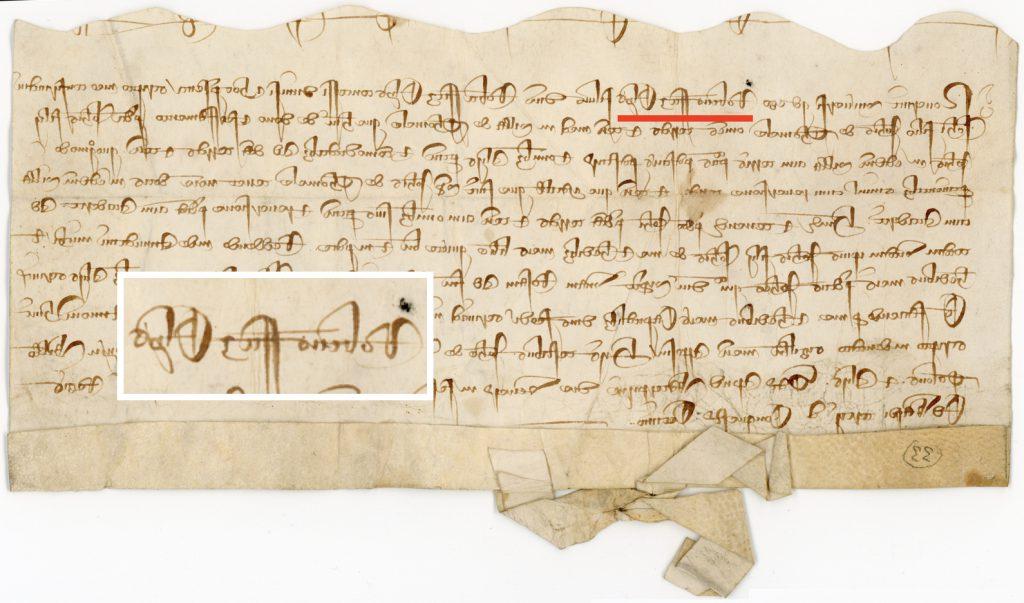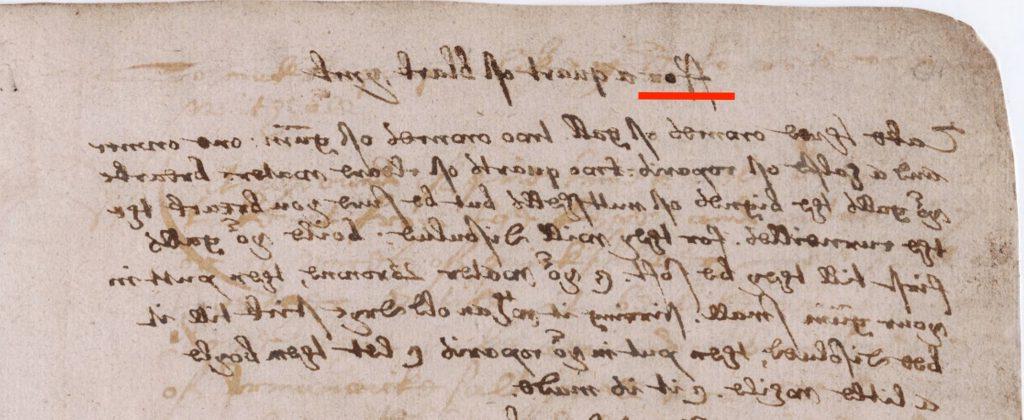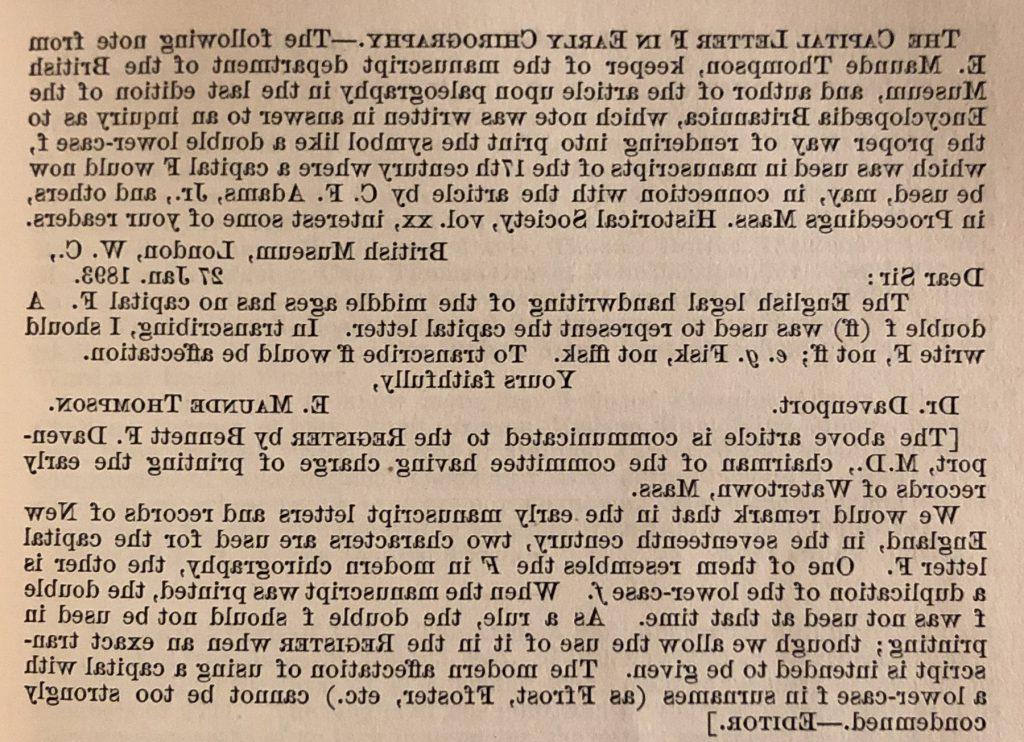By Agnieszka Rec, Associate Editor, Publications
As the MHS’s resident medievalist, I’ve found it a joy to get up close and personal with the Society’s early American manuscripts. From Abigail Adams’s neat and regular hand to John Winthrop’s nearly indecipherable scrawl, each new manuscript that crosses my desk introduces a new scribe with all their individual idiosyncrasies. And every so often these American documents offer up clear links to their medieval European antecedents.
One such example came up recently during tandem collation work in the Publications department.[i] Since last July we in Pubs have been busy preparing a digital edition of the Wôpanâak-English word list compiled by John Cotton Jr. and his unnamed Native interlocutors late in the 17th century. Working from transcriptions prepared by Kathleen Bragdon and her team at William and Mary, we have nearly completed our first verification pass of the document.[ii] The vocabulary is arranged in phrase sets with Wôpanâak words on the left and English on the right, sometimes with more than one phrase set to a line, as in this section on colors and kitchen implements:

Another section, this one concerning tides and water, uses a rather curious spelling of a common English word:

What looks like, “Kutchiskett, ffalling water,” is, in fact, “Kutchiskett, Falling water.” That double lowercase f represents a capital F.
This practice of doubling fs for capitals dates back to the Middle Ages and has been vexing readers for centuries since then. The New England Historical and Genealogical Register addressed the issue in 1893 by publishing a note from E. Maunde Thompson of the British Library.[iii]
Certain English hands, particularly legal ones, did not use the usual capital F, so “ff” developed as an alternative to set off more important words. A chirograph—a kind of legal document, as opposed to chirography, used above, which is a synonym for handwriting—from 1337 written in an Anglicana script features the grantor’s name, Robert Fitz Elys, spelled with the double f in the first line.

Hands varied over the time and by situation. A new style of writing called a secretary hand developed starting in the early sixteenth century. It also often used the double f form for a capital, as in this recipe “For a quart of black ynck” found in a commonplace book from 1595–1622:

As colonists sailed west from old England to New England, they brought with them their styles of handwriting. We saw John Cotton Jr.’s use of the double f above, and we can see it again in John Winthrop’s sermon notes, which were taken in England and brought over the Atlantic to the Massachusetts Bay Colony in its earliest years. In this note from Sept 2, 1627, Winthrop records, “Faith was now working by Love”:

As the italic and later the round hand came to predominate over the secretary, the double f slowly disappeared from use in favor of the now familiar capital F. You can still see vestiges of it today, however, in last names like Ffoster.
Armed with this new knowledge, the next time you find yourself confronted by initial double fs don’t ffall into despair, sighing, “Oh, ffs.” Have Faith and, with a flash of recognition, think, “Oh! F!”
[i] For more on the process of tandem collation, see Ondine Le Blanc’s earlier post to this blog.
[ii] John Cotton Jr.’s notebook also contains sermon notes, a journal, and Latin exercises in another hand. The journal was previously published in Len Travers, “The Missionary Journal of John Cotton, Jr., 1666–1678,” Proceedings of the Massachusetts Historical Society 109 (1998): 52–101.
The Wôpanâak language fell into a century’s long dormancy beginning in the 19th century. It has recently been revived through the efforts of Jessie Little Doe Baird and the team at the Wôpanâak Language Reclamation Project.
[iii] The New England Historical and Genealogical Register 47 (April 1893): 212.


